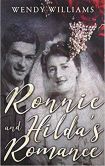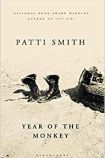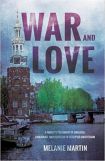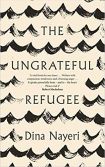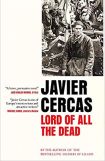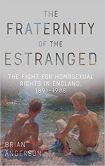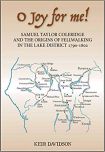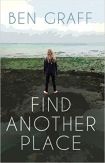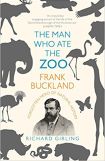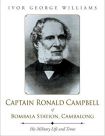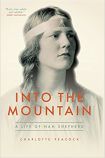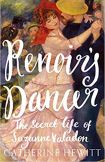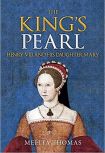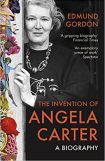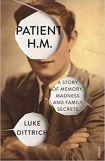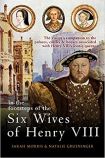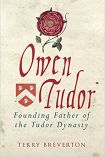Review ofRonnie and Hilda's Romance: Towards a New Life after World War II by Wendy WilliamsRonnie Williams was the son of Thomas Henry Williams (known as Harry) and Ethel Wall. There's some doubt as to whether or not they were ever married or even Harry's birthdate: he claimed to have been born in 1863, but he was already many years older than Ethel and he might well have shaved a few years off his age. For a while the family was quite well-to-do but disaster struck in the 1929 Depression and five-year-old Ronnie had to adjust to a very different lifestyle. One thing he did inherit from his father was his need to be well-turned-out and this would stay with him throughout his life. He joined the army at eighteen in 1942. Full Review |
Review ofYear of the Monkey by Patti SmithOn the coast of Santa Cruz, Patti Smith enters the lunar year of the monkey - one packed with mischief, sorrow, and unexpected moments. In a stranger's words, Anything is possible: after all, it's the year of the monkey. As Smith wanders the coast of Santa Cruz in solitude, she reflects on a year that brings huge shifts in her life - loss and aging are faced head on, as it the shifting political waters in America. Full Review |
|
|
War and Love: A family's testament of anguish, endurance and devotion in occupied Amsterdam by Melanie MartinMelanie Martin read about what happened to Dutch Jews in occupied Amsterdam during World War II and was entranced by what she discovered, particularly in The Diary of Ann Frank but then realised that her own family's stories were equally fascinating. A hundred and seven thousand Jews were deported from the city during the war years, but only five thousand survived and Martin could not understand how this could be allowed to happen in a country with liberal values who were resistant to German occupation. Most people believed that the occupation could never happen: even those who thought that the Germans might reach the city were convinced that they would soon be pushed back, that the Amsterdammers would never allow what happened to escalate in the way that it did, but initial protests melted away as the organisers became more circumspect. It's an atrocity on a vast scale, but made up of tens of thousands of individual tragedies. Full Review |
|
|
The Ungrateful Refugee by Dina Nayeri
Here in the West, we see news reports about immigrants on a regular basis – some media welcoming them, some scaremongering about them. But all of those stories are written by journalists – almost always western, and almost always, no matter how deep the investigative journalism they carry out, outsiders to the world and the situations that refugees find themselves in. It's rare that we find out the journeys from the refugees themselves – and this is a rare opportunity to do that, in this intelligent, powerful and moving work by Dina Nayeri -someone who was born in the middle of a revolution in Iran, fleeing to America as a ten-year-old.Full Review |
|
|
Lord Of All the Dead by Javier Cercas and Anne McLean (translator)Lord Of All the Dead is a journey to uncover the author's lost ancestor's life and death. Cercas is searching for the meaning behind his great uncle's death in the Spanish Civil War. Manuel Mena, Cercas' great uncle, is the figure who looms large over the book. He died relatively young whilst fighting for Francisco Franco's forces. Cercas ruminates on why his uncle fought for this dictator. The question at the centre of this book is whether it is possible for his great uncle to be a hero whilst having fought for the wrong side. Full Review |
|
|
The Fraternity of the Estranged: The Fight for Homosexual Rights in England, 1891-1908 by Brian AndersonOriginally passed in 1885, the law that had made homosexual relations a crime remained in place for 82 years. But during this time, restrictions on same-sex relationships did not go unchallenged. Between 1891 and 1908, three books on the nature of homosexuality appeared. They were written by two homosexual men: Edward Carpenter and John Addington Symonds, as well as the heterosexual Havelock Ellis. Exploring the margins of society and studying homosexuality was common on the European Continent, but barely talked about in the UK, so the publications of these men were hugely significant – contributing to the scientific understanding of homosexuality, and beginning the struggle for recognition and equality, leading to the milestone legalisation of same-sex relationships in 1967. Full Review |
|
|
O Joy for me! by Keir Davidson
Oh Joy for me! gives Coleridge credit for being the first person to walk the mountains alone, not because he had to for work, as a miner, quarryman, shepherd or pack-horse driver, but because he wanted to for pleasure and adventure. His rapturous encounters with their natural beauty, and its literary consequences, changed our view of the world. Full Review
|
|
|
Find Another Place by Ben Graff
When Ben Graff's grandfather Martin handed him a plastic folder of handwritten notes from his journal, he didn't take much notice of it. At the age of 24, Graff didn't realise the gravity of the pages he was holding. Full Review |
|
|
The Man Who Ate the Zoo: Frank Buckland, forgotten hero of natural history by Richard GirlingAs a conservationist in Victorian England before the term existed, Frank Buckland was very much a man ahead of his time. Surgeon, naturalist, veterinarian and eccentric sums him up perfectly, and any biographer is immediately presented with a colourful tale to tell. Full Review |
|
|
Captain Ronald Campbell of Bombala Station, Cambalong: His Military Life and Times by Ivor George WilliamsIn March 1829 Ann Parker married Captain J A Edwards of the 17th Regiment of Foot. He was in command of the troops and convicts on board a ship sailing from Plymouth to Sydney, Australia: his wife and young son accompanied him. He was not destined to live a long life, dying suddenly at the age of 34 at Bangalore, leaving his widow to raise their two young sons. Edwards' death left his widow in a difficult position: not only did she have their farm to manage, she was also responsible for the convicts who worked the land. Two years later she would marry Captain Ronald Campbell. Full Review |
|
|
Into The Mountain, A Life of Nan Shepherd by Charlotte PeacockMostly we choose what books to read, because there is so little time and so many books… I can understand the approach, but I also think we sell ourselves short by it, and we sell the myriad lesser known authors short as well. So while, like most other people I have my favourite genres, and favoured authors, and while, like most other people I read the reviews and follow up on what appeals, I also have a third string to my reading bow: randomness. Full Review |
|
|
Renoir's Dancer: The Secret Life of Suzanne Valadon by Catherine HewittDeep in the rural parts of France in the 1860s, you would never really expect to find someone who would come to embody a full artistic period – and not just a movement at that, but a full generation of both creative and societal change. And if you were to expect that someone, they would like as not be male. But almost stumbling into the hedonistic culture of Montmartre came Marie-Clementine Valadon. She started in the circus that first caught her teenaged eye, although her gymnastic career was short-lived. But what she did have from that was the poise to be an appealing model for some seriously important painters, and a natural beauty and figure to appeal to both them and their audiences. And what she also had, much to the surprise of many and the distaste of some, was artistic talent of her own… Full Review |
|
|
James Ravilious: A Life by Robin RaviliousThe name of Eric Ravilious, war artist, engraver and designer, has long been familiar. Less well-known was his equally gifted son James. This delightful biography by his widow should help to put the situation right. Full Review |
|
|
The King's Pearl: Henry VIII and His Daughter Mary by Melita ThomasAs the eldest surviving child of a much-married father whose main aim was to secure the royal succession with sons, Mary Tudor's relationship with Henry VIII, who called her his 'pearl of the world', was inevitably an important and often fraught one.Full Review |
|
|
The Invention of Angela Carter by Edmund GordonAngela Carter is remembered as an influential and inventive writer – with works like The Bloody Chamber and Nights at the Circus propelling her to fame, and a status as an icon and inspiration for many modern-day writers. Here author Edmund Gordon delves into the life of Carter – from the London of the 1940s through to the London of the 1990s, with stops in Bristol, Tokyo, Australia, and various other places in between. A work that is as full of detail as it is full of devotion to a remarkable woman, The Invention of Angela Carter is the first authorised biography of a woman and a writer who is hugely missed today. Full Review |
|
|
Patient H.M.: A Story of Memory, Madness and Family Secrets by Luke DittrichLuke Dittrich seeks to shed light on the man behind the initials, and in doing so, uncovers quite a bit more than he expected. Full Review |
|
|
In the Footsteps of the Six Wives of Henry VIII: The visitor's companion to the palaces, castles & houses associated with Henry VIII's iconic queens by S Morris and N GrueningerIt was inevitable that each of the six wives of Henry VIII would have left their mark in some way on the places they lived and visited. This book straddles several categories; it is part history, part gazetteer or guide book, and also a collection of potted biographies. Full Review |
|
|
Owen Tudor: Founding Father of the Tudor Dynasty by Terry BrevertonOwen Tudor was one of those shadowy yet very important characters in medieval history. While we may know little about him, or at least did not until this biography appeared, his historical importance can hardly be overestimated. Without him, there would have been no Tudor dynasty. Full Review |
